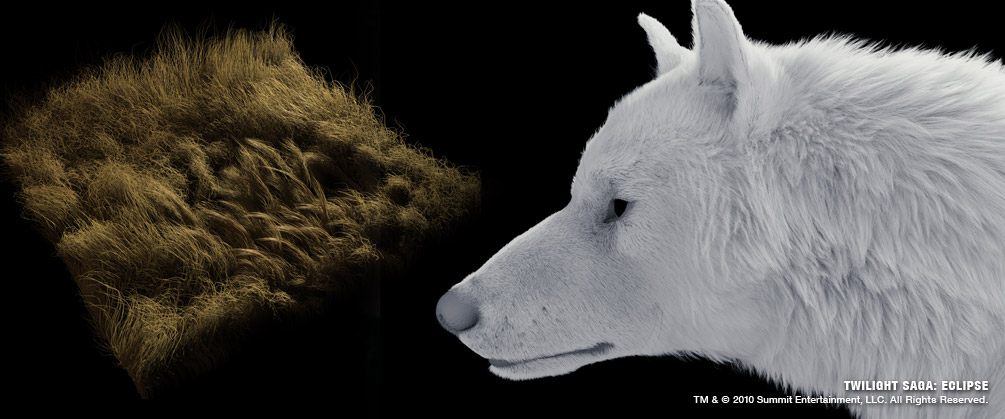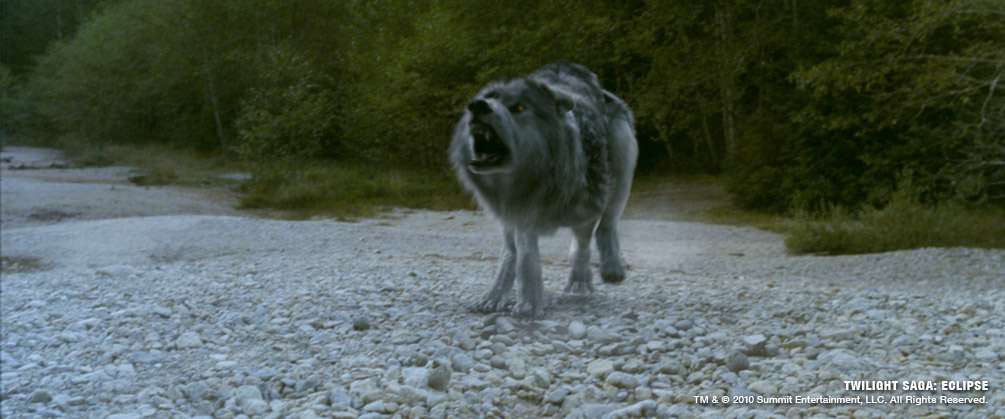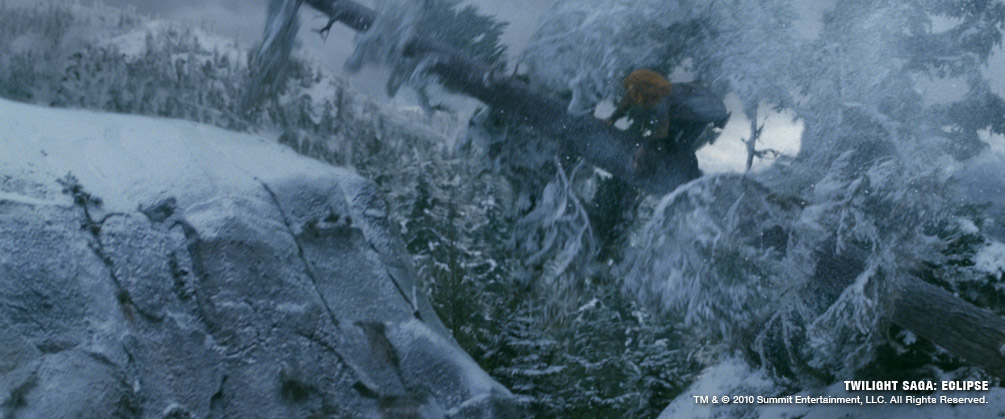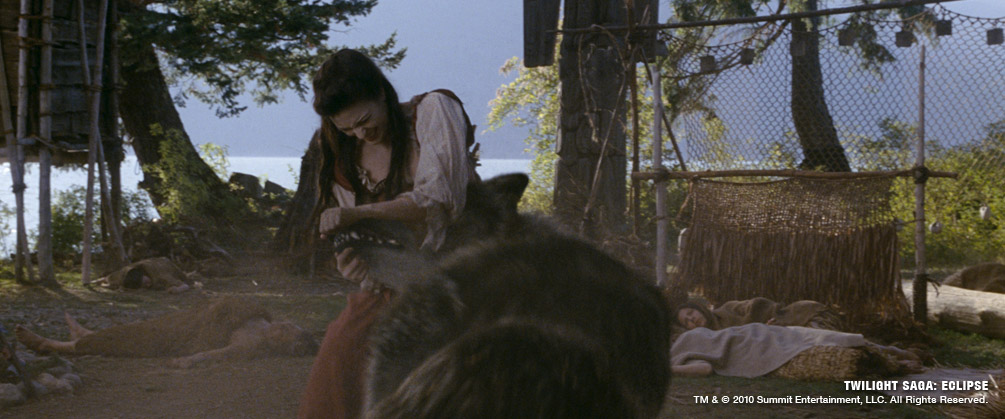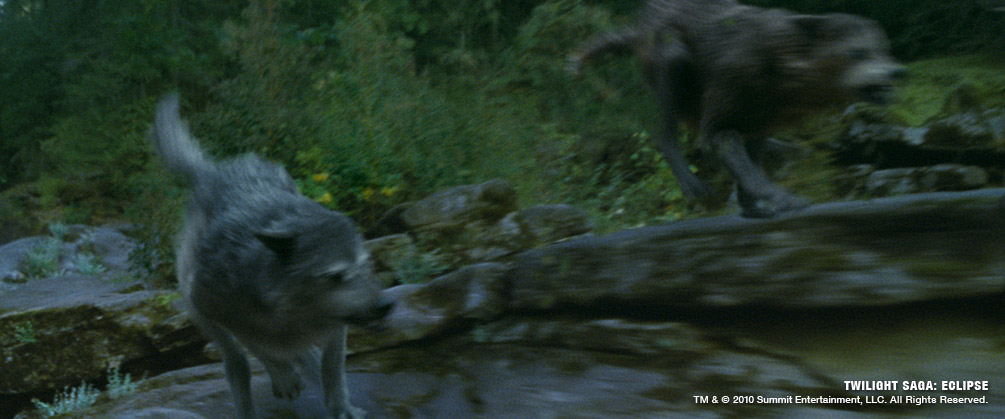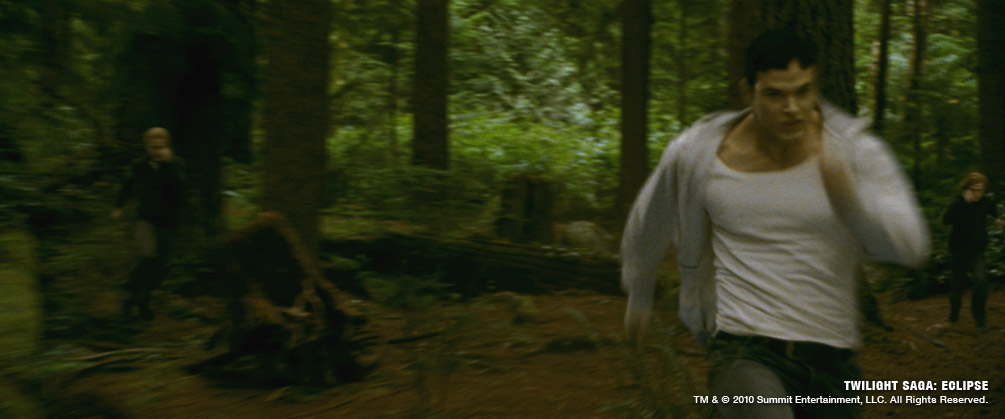The Twilight Saga: Eclipse Case Study
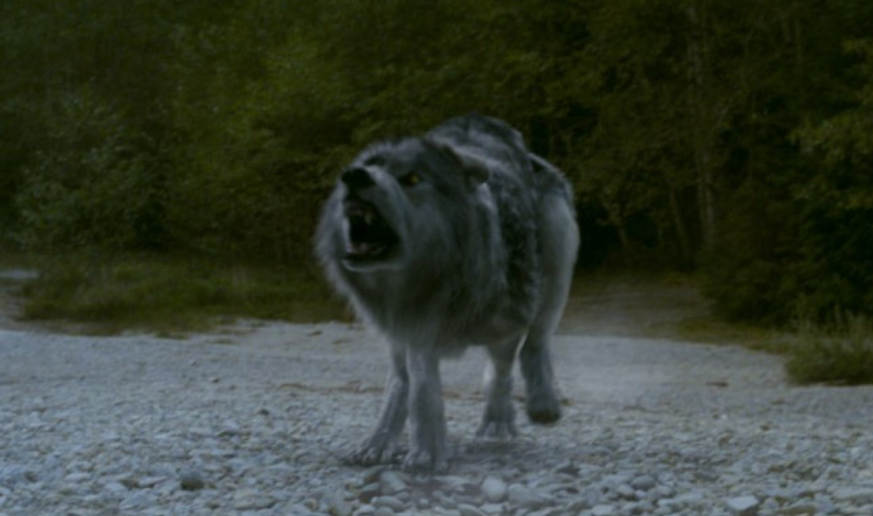
Case Study
Image Engine Joins the Saga – creating werewolves, vampire effects and digital environments for the world of Eclipse.
It all began during the summer of 2009, when Visual Effects Supervisor Kevin Tod Haug introduced Image Engine to David Slade, Director of the third installment in the Twilight feature film franchise.
Image Engine had worked with Haug previously, on projects including A Wrinkle in Time (2003) and Mr. Magorium’s Wonder Emporium (2007). Having been impressed by the studio’s Oscar® nominated work on District 9, Slade initially briefed Image Engine to bring naturalism and a raw feel to specific Werewolf shots dubbed “The Historical Wolves” – creatures that appear as flashbacks to explain the origin story in the Twilight Werewolf lore.
This scope of work quickly grew, and went on to number over 300 shots – encompassing, as Visual Effects Executive Producer Shawn Walsh summarizes: “Werewolf animation, digital doubles, vampire deaths, digital environments, matte painting and loads of compositing!”
Nick Brooks, Production Visual Effects Supervisor had this to say about the final results: “Image Engine completed some of the hardest VFX work on Twilight Eclipse. Their 3D Wolves are amongst the best in the film but represent just a portion of the stunning work that they created. Image Engine has found the balance between creative passion and technological excellence. And their commitment and can-do attitude made an extremely challenging project, a great experience! David and I would like to express our great admiration and gratitude to all the Artists, R&D Team and Management at Image Engine. They are trusted collaborators.”
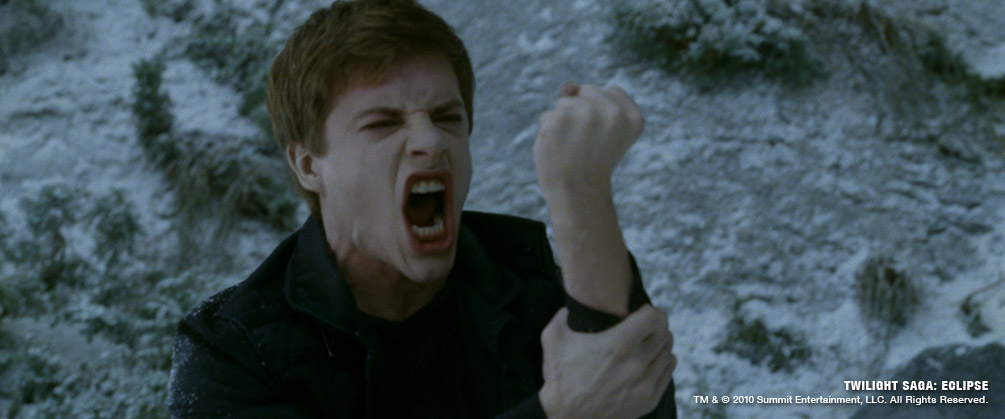
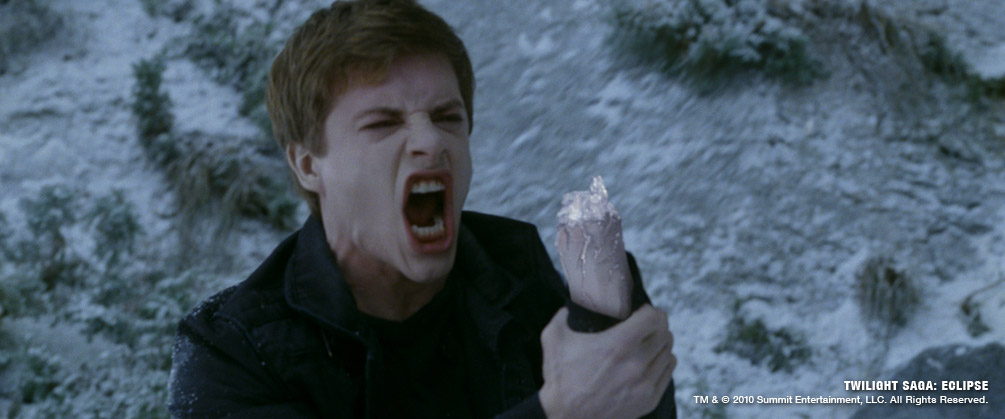
The show involved extensive look development and R&D support, with briefs ranging from aesthetically demanding to technically challenging. One of the most rewarding by far was building the fur pipeline required for the new wolves, where the team was given the leeway to experiment with new treatments.
In-house Visual Effects Supervisor, Jon Cowley summarizes: “Image Engine created an entire proprietary fur pipeline from scratch. Our R&D team had a field day incorporating all of the latest developments in fur technology, leveraging the flexibility of 3Delight.”
Peter Muyzers, Company Partner and Digital Production Supervisor for the show, describes the challenge: “As you would expect, Tippett Studio had set a very high standard on ‘New Moon’ and in addition, both studios were briefed to raise the bar yet again. Image Engine had to rise to that occasion, whilst also being tasked with the development of a new look for the historical wolves.”
Lead R&D Programmer John Haddon led the R&D department in a rapid development program, which within 90 days concluded with a fully functional fur-rendering tool set.
Speaking of the results, Muyzers concludes: “I am very pleased with the level of realism that was achieved and how rich and detailed the fur looks on the big screen. This proves yet again that Image Engine is capable of achieving impressive creature work at a competitive level, and the results speak for themselves.”
Creating the CG Wolves involved the participation of multiple teams across the studio, as Cowley explains: “It was the most complex and detailed part of the project. That effort represented a huge amount of work for almost every department and was a technical, animation, lighting and rendering challenge. Everyone was jazzed about getting a chance to bring these characters to life.”
The animation team, led by Ken Steel, Animation Supervisor, spent time studying naturalistic wolf movements in order to tackle the challenge of convincingly applying them to a 1500-pound creature.
Steel elaborates: “One of the greatest challenges we faced during Twilight was animating massive wolves moving at incredibly fast speeds while keeping their motions realistic. We compensated for this by adding more weight to the characters by accentuating torso, head and shoulder and ankle motions. Adding muscle and fur dynamics on top of the performance, aided in the perception of the final size and the weight of the characters.”
Another challenge for Image Engine involved developing the vampire death effects, which called for complex look-development work. “We had a talented team developing this abstract look and Chris Zammit, one of our look dev artists, played a key role in this process” says Cowley.
“We were tasked with creating an internal structure and determining the physics for what creatively happened to a vampire when they were ‘turned’. Our CG Asset Supervisor, Nigel Denton-Howes, spent some good old-fashioned Photoshop time developing a look for their anatomical innards. Then we had to go and break these vampires apart. We had iterations ranging from three or four pieces to much more complex versions. At one stage, for example, we had a vampire head shattering into fifty different pieces.”
The vampire-speed effects were developed on-set by Senior Compositor Shervin Shoghian, whilst embedded within editorial, at Vancouver Film Studios. The compositing team, helmed by Hamish Schumacher, Compositing Lead, also handled extensive digital environments, where the studio’s NUKE proficiency paid huge dividends.
This included the spectacular mountain top digital environment extensions – where a scene set on a sunny day in summer was seamlessly integrated with a snow-scene shot on an indoor stage.
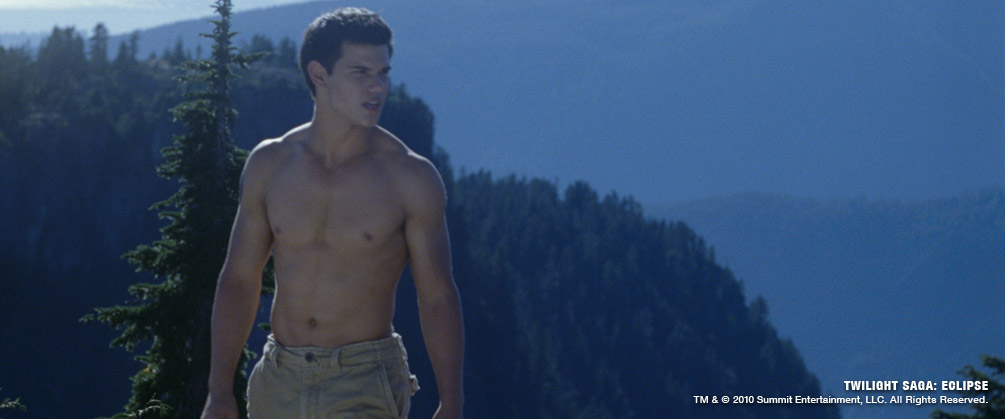
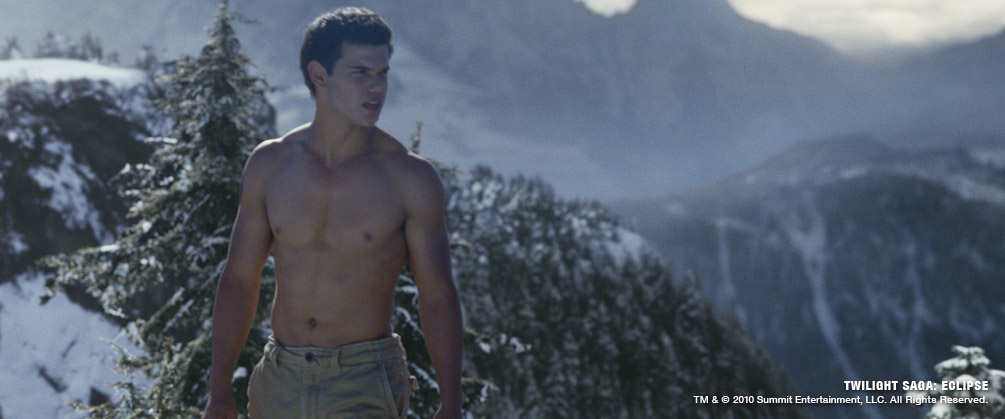
As Schumacher describes: “Our goal was to make the final shots look like they were shot up in the mountains in the middle of winter out in the freezing cold. With the help of some in-house matte painters, the compositors were able to use Nuke’s 3D system to project various layers of snow-covered trees and mountains into the background to help sell an inhospitable location.
The icing on the cake in these shots was the decision to add a light amount of snow wafting between the background layers and foreground characters. This really helped to make the sequence look like a very cold environment and tied everything in together.”
Image Engine also worked closely with boutique digital matte painting vendor Hatch FX, who supplied a master matte painting for the mountain top environment. Image Engine then combined this painting with extensive location digital SLR photography taken by Visual Effects Plate Supervisor Robin Hackl on location at Mount Seymour. Ultimately the mountain top environment build incorporated on-set and location photography taken in dramatically different lighting scenarios and incorporated digital matte paintings, digital SLR, and digital atmospheric effects to achieve a seamless appearance in the final footage.
“Image Engine handled a very diverse portfolio of work on ‘Eclipse”, Walsh concludes: “…and the results are stunning. We’re really proud of our ability to creatively wrangle the unique challenges that David Slade presented to us and we look forward to working with him and Summit Entertainment again in the future.”


